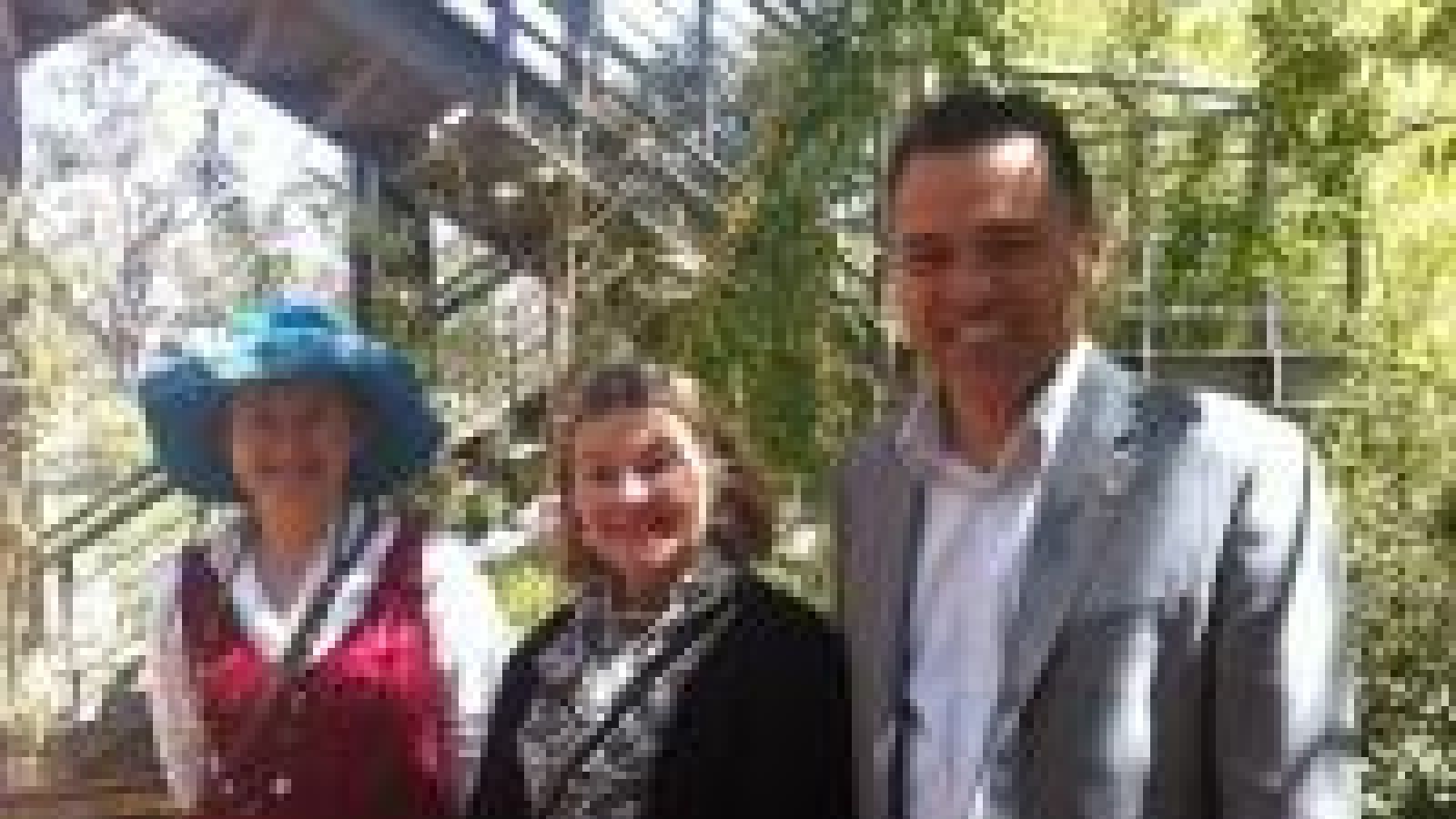Undergrad Indigenous language course launched at ANU

Last month, the ANU School of Language Studies hosted the official launch of its new undergraduate course in Indigenous languages.
The new course, AUST 1001, will allow ANU students to learn Indigenous languages through its flexible structure.

From left to right: Dr Jane Simpson, Anne Martin from the ANU Tjabal Centre, and Dr Chris Bourke at the launch.
Students and staff from around the University and Member for Ginninderra and Gamilaraay man Dr Chris Bourke attended the launch of the new language course.
It’s an exciting addition to complement the University’s existing strengths in Indigenous language research and adds further diversity to its offerings in languages and Indigenous Studies.
This semester, students are learning Gamilaraay – an Indigenous language from northeast New South Wales. The course has some students who are participating online. In first semester this year, ANU had several AUST1001 students learn Yolngu Matha (an Indigenous language spoken in Arnhem Land), through online teaching from Charles Darwin University.
A key aim of teaching Indigenous languages at ANU is to partner with other universities and share course materials and resources online. Materials are also freely available online for anyone interested in learning these languages.
The structure of the course will allow any Indigenous languages to be taught using this format, depending on teaching resources that are available.
Introduction to Gamilaraay is being taught by Mr John Giacon, who is currently working on documenting existing resources on the Gamilaraay language for his doctorate.
Dr Jane Simpson, head of the School of Languages, says there are a number of challenges in teaching Indigenous languages at university, but that the new course goes a long way in helping to overcome these.
“The first comes down to which language to teach, bringing up the importance of local communities being involved. However none of the Indigenous languages still spoken by children have a university on their country,” she says.
She adds that ANU partner Charles Darwin University has come up with a compromise for this problem by having Yolngu teachers from Arnhem Land teaching from country via Skype.
“The second problem is the likelihood that small enrolments won’t cover the costs of resource intensive teaching, especially when you have no commercially available textbooks, materials and curricula,” says Dr Simpson.
Sharing courses and materials between universities, teaching online and using video-conferencing are helping to cut down on some these costs, and may be the way forward for the future of Indigenous language teaching at universities across Australia.